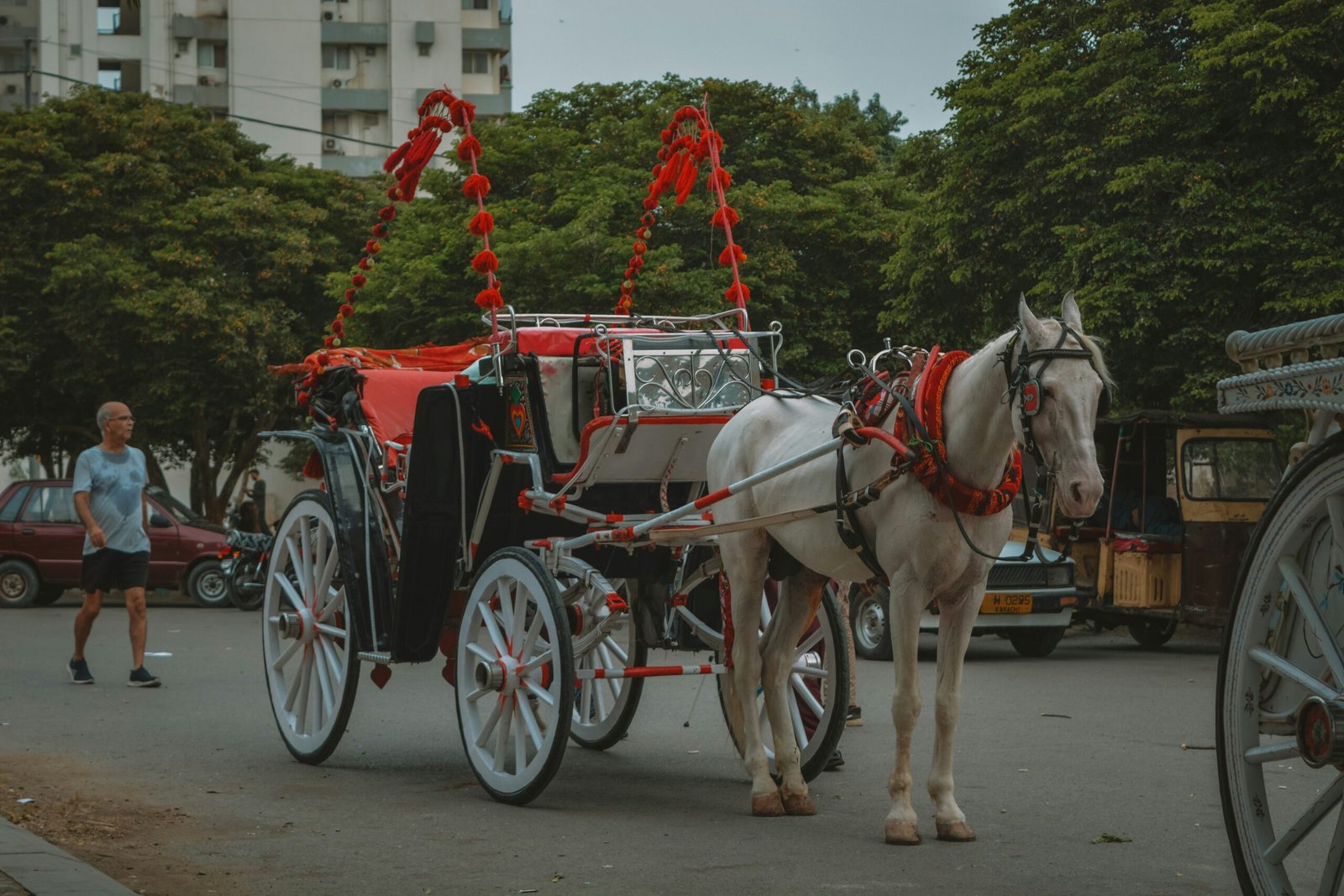West Bengal
Where Every Street Tells a Story
HIGHLIGHT
Experience the breathtaking beauty of the Scottish Highlands, with its rugged mountains, shimmering lochs, and picturesque glens.
West Bengal
A Kaleidoscope of Tradition, Art, and Nature
Whether you're exploring the Sundarbans, visiting the iconic Victoria Memorial, or savoring delicious Bengali sweets, West Bengal provides a rich and immersive travel experience
West Bengal, located in eastern India, is a culturally vibrant state that offers a wide variety of experiences. From the bustling cosmopolitan city of Kolkata to the tranquil tea estates of Darjeeling and the mysterious mangroves of the Sundarbans, West Bengal presents a rich tapestry of history, art, and nature. Known for its festivals, particularly Durga Puja, West Bengal is a destination where traditional culture thrives alongside modernity. Whether it’s exploring colonial-era architecture, enjoying a boat ride on the Ganges, or trekking in the hills, West Bengal promises a journey filled with discovery and wonder.
History
The history of West Bengal is deeply intertwined with the ancient, medieval, and colonial eras of India. The region was part of the Magadha Empire and later the Maurya and Gupta Empires. During the medieval period, Bengal became a significant center of learning and culture under the rule of the Pala and Sena dynasties. The region saw the rise of the Bengal Sultanate in the 14th century, which left a rich architectural legacy.
In the colonial era, West Bengal played a pivotal role in India’s freedom struggle. Kolkata, formerly known as Calcutta, was the capital of British India until 1911 and became a major center of commerce, education, and culture. It was also the birthplace of the Bengal Renaissance, which produced luminaries like Rabindranath Tagore and Swami Vivekananda. Post-independence, West Bengal emerged as a key state, blending its historical heritage with modern development. Today, it stands as a beacon of cultural richness and political significance in India.
Points of Interest
Kolkata (City of Joy):
The capital city of West Bengal, Kolkata, is known for its colonial architecture, vibrant art scene, and intellectual heritage. Key attractions include the Victoria Memorial, a grand marble structure symbolizing the British Empire, and Howrah Bridge, an engineering marvel. Kolkata is also famous for its cultural landmarks like the Indian Museum, the Marble Palace, and Dakshineswar Kali Temple. Don’t miss Park Street for its bustling restaurants and nightlife.
Sundarbans (UNESCO World Heritage Site):
The Sundarbans is the world’s largest mangrove forest and a UNESCO World Heritage Site. Home to the Royal Bengal Tiger, it offers a unique wildlife experience with its rich biodiversity, including saltwater crocodiles, river dolphins, and numerous bird species. Boat safaris through its winding rivers and creeks offer an unforgettable experience.
Darjeeling (Queen of the Hills):
Nestled in the Himalayas, Darjeeling is famous for its sprawling tea plantations and stunning views of Kanchenjunga, the third-highest mountain in the world. The Darjeeling Himalayan Railway, a UNESCO World Heritage Site, offers a scenic toy train ride through the hills. Key attractions include the Tiger Hill for sunrise views, the Peace Pagoda, and the tea gardens.
Kalimpong and Dooars:
Kalimpong, another hill station in the Himalayas, is known for its orchids, Buddhist monasteries, and colonial-era architecture. The nearby Dooars region is known for its lush green forests, tea gardens, and wildlife sanctuaries like Gorumara National Park and Jaldapara Wildlife Sanctuary, home to the Indian one-horned rhinoceros.
Shantiniketan:
Founded by Rabindranath Tagore, Shantiniketan is an important cultural and educational hub, home to the Visva-Bharati University. It is known for its artistic community, and the Poush Mela and Basanta Utsav festivals, which showcase Bengal’s traditional arts, music, and crafts.
Murshidabad:
A historic town, Murshidabad was the capital of Bengal during the Mughal and Nawabi rule. The town is known for its Hazarduari Palace, with its thousand doors, and the Katra Mosque. It offers a glimpse into Bengal’s rich Mughal and colonial history.
Bishnupur:
Famous for its terracotta temples built by the Malla dynasty, Bishnupur is an architectural marvel. The temples are adorned with intricate terracotta carvings, and the town is also known for its traditional Baluchari sarees and classical music heritage.
Digha and Mandarmani Beaches:
Digha is a popular beach destination on the Bay of Bengal, offering a laid-back coastal experience. Nearby Mandarmani is known for its long, motorable beach and serene ambiance, making it perfect for a peaceful seaside getaway.
Tarapith and Mayapur:
Tarapith is a sacred pilgrimage site dedicated to the goddess Tara, a form of Kali, while Mayapur is the global headquarters of the International Society for Krishna Consciousness (ISKCON). Both places are spiritually significant and attract thousands of devotees annually.
Culture and Festivals
West Bengal is a cultural hub known for its literary, artistic, and musical traditions. The state’s festivals are celebrated with grandeur, offering visitors a chance to witness its vibrant cultural heritage. Bengali music, particularly Rabindra Sangeet, and dance forms like Gaudiya Nritya and Chhau are intrinsic to its cultural identity.
Durga Puja:
The most important festival in West Bengal, Durga Puja, is celebrated with unmatched grandeur and artistry. The streets of Kolkata come alive with intricately crafted pandals (temporary structures) housing beautiful idols of Goddess Durga. The festival is marked by music, dance, food, and the immersion of idols in rivers.
Poila Boishakh:
The Bengali New Year, celebrated in April, is a time for family gatherings, cultural performances, and feasts. The streets are filled with music, and traditional clothes are worn to mark the beginning of the new year.
Rath Yatra (Puri-inspired):
The Rath Yatra is celebrated in several parts of West Bengal, especially in Mayapur and Mahesh, where huge chariots carrying the deities are pulled by thousands of devotees in a grand procession.
Vasant Utsav (Shantiniketan):
Inspired by Holika, Vasant Utsav celebrates spring with color, music, and dance. It was popularized by Rabindranath Tagore in Shantiniketan, where the festival is celebrated with song and dance performances, showcasing the rich artistic traditions of Bengal.
Ganga Sagar Mela:
Held annually in January on Sagar Island, where the Ganges meets the Bay of Bengal, the Ganga Sagar Mela is the second-largest gathering of pilgrims in India after the Kumbh Mela.
What's the weather like?
When to visit West Bengal
The best time to visit West Bengal is during the winter months, from October to March, when the weather is cool and pleasant for sightseeing. The months of September-October are especially popular due to Durga Puja. Summers can be hot and humid, while the monsoon season (July-September) brings heavy rainfall, especially in the hill stations.
10
°C
60
MM
15
°C
80
MM
Spring
March to May
Summer
June to August
10
°C
100
MM
4
°C
90
MM
Autumn
September to November
Winter
December to February
Spring
March to May
Summer
June to August
Autumn
September to November
Winter
December to February
Example Trips
Book Your Tour
Browse our example trips and get in contact to start planning your very own adventure.
Escape the Ordinary
Our Stories
"Memories of a Lifetime"
Thanks to Hidden Journeys, we discovered parts of India we didn’t even know existed. Their knowledge of local culture and hidden gems made this the trip of a lifetime. Can’t wait for our next adventure with them!

Lita from Japan
"Tailored Perfection!"
Our travel agent listened attentively to our preferences and crafted a bespoke itinerary that exceeded our wildest dreams. From securing coveted reservations to arranging private tours, they went above and beyond to ensure our satisfaction. Thanks to their dedication and expertise, we enjoyed a seamless and truly unforgettable journey. We can't wait to plan our next adventure with them!

flombergdeb from USA
CEOApple"A Dream Destination Wedding Come True"
Hidden Journeys planned our destination wedding in Rajasthan, and it was beyond magical. From the intricately planned ceremonies to the breathtaking venues, everything was flawless. Our guests still rave about the experience!

Mercel
Travel Safely with Hidden Journeys
Proudly Recognized by the Ministry of Tourism
At Hidden Journeys, your safety and memorable travel experiences are our top priorities. Proudly recognized by the Ministry of Tourism and affiliated with esteemed organizations such as ADTOI (Association of Domestic Tour Operators of India) and IOTA (Indian Outbound Travel Association), we ensure that every journey is crafted to the highest standards of quality and trust. With over 20 years of expertise in curating authentic, immersive travel experiences across India, we’re here to show you the unseen side of India with the utmost care and dedication. Travel with confidence and explore India like never before – only with Hidden Journeys.

As Seen In






Your Bespoke & Luxury Travel partner. Discover unseen of India.


